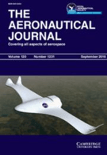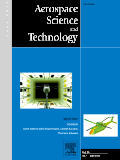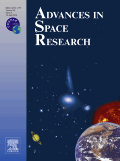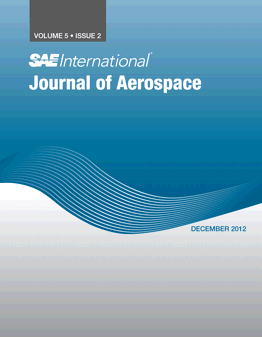
Aerospace Research in Bulgaria
Scope & Guideline
Shaping the future of aerospace through rigorous research.
Introduction
Aims and Scopes
- Remote Sensing Applications:
The journal extensively covers the use of satellite data and remote sensing technologies for various applications, including environmental monitoring, agriculture, disaster management, and urban planning. - Aerospace Systems and Engineering:
Research on the design, development, and performance analysis of aerospace systems, including unmanned aerial vehicles (UAVs), satellite systems, and propulsion technologies. - Space Science and Technology:
The journal publishes findings related to space exploration, cosmic phenomena, and the technological advancements necessary for space missions. - Environmental Monitoring and Analysis:
A significant portion of the research focuses on the use of aerospace technologies to monitor environmental changes, such as climate change effects, pollution, and natural disasters. - Innovations in Aerospace Materials and Structures:
The journal highlights studies on new materials and structural designs used in aerospace applications, emphasizing performance improvements and sustainability.
Trending and Emerging
- Artificial Intelligence in Aerospace:
The integration of AI technologies for monitoring, analysis, and operational efficiency in aerospace applications is becoming increasingly prominent. - Sustainable and Eco-friendly Aerospace Technologies:
Research focusing on sustainable practices in aerospace engineering, including the development of low-emission propulsion systems and eco-friendly materials, is gaining traction. - Advanced Remote Sensing Techniques:
With advancements in satellite technologies, there is a growing emphasis on innovative remote sensing techniques that enhance data collection and analysis capabilities. - Impact of Climate Change on Aerospace Operations:
Studies examining the effects of climate change on aerospace operations, including weather patterns and environmental impacts, are emerging as critical areas of research. - Urban Air Mobility Solutions:
Research on the development of urban air mobility systems, including drones and air taxis, indicates a shift towards addressing urban transportation challenges through aerospace innovations.
Declining or Waning
- Traditional Aerodynamics Studies:
There has been a noticeable decrease in papers focusing on classical aerodynamics principles, as newer technologies and methodologies take precedence in research. - Military Applications of Aerospace Technologies:
Research specifically targeting military applications appears to be waning, possibly due to changing global priorities and an increased focus on civilian applications of aerospace technology. - Historical Space Missions Analysis:
Analysis and reviews of historical space missions are less frequent, indicating a shift towards contemporary and future-oriented aerospace research. - Conventional Aircraft Design Studies:
Studies centered around traditional aircraft design methodologies have decreased, as innovative approaches and technologies are gaining more attention. - Generalized Space Policy Discussions:
General discussions surrounding space policy and international cooperation have become less prominent, with a focus shifting towards specific technologies and applications.
Similar Journals

AERONAUTICAL JOURNAL
Innovating the future of aeronautical research.Aeronautical Journal, published by Cambridge University Press, is a premier scholarly journal dedicated to advancing the field of aerospace engineering. With a notable impact factor, this journal holds a strong position in the academic community, ranked #53 out of 153 in the Scopus category of Aerospace Engineering, placing it in the 65th percentile. The journal has been providing a platform for groundbreaking research since its inception in 1969, and continues to be a vital resource for researchers, professionals, and students involved in aeronautics. As a Q2 journal in the 2023 Aerospace Engineering category, it offers high-quality articles that cover a range of topics within the discipline, contributing to the ongoing discourse and innovation in aerospace technologies. Although not an open-access journal, it remains accessible to a vast readership through institutional subscriptions and partnerships. The Aeronautical Journal is a crucial publication for those seeking to stay at the forefront of aerospace research and development.

Aerospace Science and Technology
Pioneering Innovations in Aerospace EngineeringAerospace Science and Technology, published by ELSEVIER FRANCE-EDITIONS SCIENTIFIQUES MEDICALES ELSEVIER, is a leading journal in the field of aerospace engineering, boasting an impressive 2023 Q1 ranking and a significant position in the Scopus Ranks, where it stands at Rank #7 out of 153 in the Engineering - Aerospace Engineering category, reflecting its credibility and impact with a 95th percentile ranking. Since its inception in 1997, this journal has provided a robust platform for the dissemination of pioneering research and advancements in aerospace technology, focusing on innovative methodologies and applications in the aerospace sector. With a commitment to open access, researchers, professionals, and students can easily engage with cutting-edge findings that drive the industry forward. The journal not only seeks to expand knowledge but also aims to foster collaboration among scholars across the globe, making it an essential resource for anyone looking to stay at the forefront of aerospace innovation. For more information, visit its website or refer to its dedicated address at 65 Rue Camille Desmoulins, CS50083, 92442 Issy-Les-Moulineaux, France.

International Journal of Aviation Aeronautics and Aerospace
Exploring Frontiers in Aeronautics and Engineering ExcellenceInternational Journal of Aviation Aeronautics and Aerospace, published by Embry-Riddle Aeronautical University, serves as a pivotal platform for the dissemination of innovative research in the fields of aerospace engineering, civil and structural engineering, and safety, risk, reliability, and quality. With an ISSN of 2374-6793 and designated as an open access journal since 2014, it enables unhindered global access to its scholarly content, fostering collaboration among researchers, professionals, and students in the aviation sector. The journal's presence spans from 2014 to 2024 and is recognized within the Q3 category across multiple engineering domains according to recent metrics. Despite its emerging status, it holds respectable rankings in Scopus, demonstrating its relevance and contribution to the academic community, particularly in dynamic engineering sectors. It is an essential resource for anyone looking to enhance their understanding of advancements and challenges in aviation and aerospace solutions.

New Space-The Journal of Space Entrepreneurship and Innovation
Connecting Engineering and Entrepreneurship Beyond EarthNew Space - The Journal of Space Entrepreneurship and Innovation is a pivotal publication dedicated to advancing the field of aerospace through innovative research and practical insights. Published by Mary Ann Liebert, Inc., this journal serves as a crucial platform for scholars, engineers, and entrepreneurs interested in the burgeoning sectors of space technology and commercial space endeavors. With an ISSN of 2168-0256 and an E-ISSN of 2168-0264, New Space explores the intersection of engineering, sustainability, and business within the aerospace industry. The journal's impact is highlighted by its Q3 ranking in multiple categories, including Aerospace Engineering and Astronomy and Astrophysics, signifying its relevance in contemporary research dialogues. Although currently closed access, the journal's dedication to fostering innovations is clear as it addresses critical topics from safety and risk management to energy technologies and tourism in space contexts. Researchers and professionals seeking to influence the future of space entrepreneurship will find valuable content and a collaborative community within these pages, making New Space an essential resource in its field.

ADVANCES IN SPACE RESEARCH
Shaping the Future of Space Research.ADVANCES IN SPACE RESEARCH, published by Elsevier Science Ltd, is a leading journal in the fields of Aerospace Engineering, Astronomy and Astrophysics, Atmospheric Science, and more. Since its inception in 1981, this journal has dedicated itself to the dissemination of high-quality research contributing to the understanding of space and planetary sciences through a multidisciplinary lens. With an impressive impact factor reflected in its positioning within the Q1 and Q2 quartiles across various categories, it serves as an essential resource for researchers and professionals alike. The journal's rigorous peer review process ensures that only the most relevant and groundbreaking studies are published, making it a cornerstone for those navigating the complexities of space research. The journal is accessible by subscription, inviting a global readership to engage with trailblazing research that influences future advancements and fosters collaborations across the scientific community. With a reputation for excellence, ADVANCES IN SPACE RESEARCH remains committed to pushing the boundaries of knowledge in the ever-evolving field of space exploration.

CEAS Space Journal
Illuminating the path of space exploration with impactful studies.CEAS Space Journal, published by SPRINGER WIEN, serves as a critical platform for advancing knowledge in the fields of aerospace engineering and space science. With an ISSN of 1868-2502 and an E-ISSN of 1868-2510, this journal has been at the forefront of scholarly communication since its inception in 2011, showcasing cutting-edge research that spans to the present day (2024). The journal holds a solid reputation, ranking in the Q2 quartile for Aerospace Engineering and Q3 for Space and Planetary Science as of 2023, illustrating its impactful contributions within these disciplines. Scopus rankings further underline its prominence, placing it in the 70th percentile among aerospace engineering journals. Although it is not an open access publication, the insights published in the CEAS Space Journal are invaluable for researchers, professionals, and students alike, providing essential studies and reviews that push the boundaries of aerospace innovation and planetary exploration. The journal's commitment to quality and rigor makes it an indispensable resource for anyone looking to deepen their understanding of contemporary challenges and technological advancements in space science.

International Journal of Aeronautical and Space Sciences
Unveiling Solutions for Aerospace ChallengesThe International Journal of Aeronautical and Space Sciences, published by Springer, is a prominent platform dedicated to advancing research and innovation in the fields of Aerospace Engineering, Control and Systems Engineering, Electrical and Electronic Engineering, and Materials Science. With an ISSN of 2093-274X and an E-ISSN of 2093-2480, the journal has established itself as a vital resource since its inception in 2011, currently offering insights that span a wide range of contemporary challenges and technological advancements in aeronautics and space exploration. Ranking in the Q2 category across multiple disciplines, including Aerospace and Control Engineering, signifies its recognized impact and quality within the academic community. Although not an open-access journal, it remains accessible to researchers, professionals, and students seeking to enhance their understanding of complex aerospace systems and their applications. The journal’s commitment to publishing high-quality research makes it indispensable for those aiming to contribute to, or stay informed about, the evolving landscape of aerospace technology.

Journal of the Korean Society for Aeronautical and Space Sciences
Bridging Ideas and Innovations in AerospaceThe Journal of the Korean Society for Aeronautical and Space Sciences is a dedicated platform for the dissemination of cutting-edge research in the fields of aerospace engineering and space sciences. Published by the esteemed Korean Society for Aeronautical & Space Sciences, this journal aims to bring together innovative findings and technological advancements from around the globe, thereby contributing to the ongoing development of the aerospace sector. Operating from South Korea, the journal holds an ISSN of 1225-1348 and an E-ISSN of 2287-6871, catering to both print and digital scholarly communication. Although categorized in Q4 within the Aerospace Engineering segment and ranked 139 out of 153 on Scopus, the journal plays a crucial role in fostering research collaboration and knowledge exchange among professionals, researchers, and students alike. With converged years from 2019 to 2024, it continuously seeks to enhance its contributions to the academic community through rigorous peer review and publication of original research. Given the evolution of aerospace technologies, this journal is vital for anyone involved in aeronautical research, ensuring that their work reaches the right audience.

SAE International Journal of Aerospace
Exploring New Frontiers in Aerospace Research.The SAE International Journal of Aerospace, published by SAE International, serves as a critical platform for innovative research and advancements within the field of aerospace engineering. With an ISSN of 1946-3855 and an E-ISSN of 1946-3901, this esteemed journal contributes significantly to the body of knowledge in the aerospace sector, boasting a convergence span from 2008 to 2024. While currently categorized in Q4 of Aerospace Engineering, the journal is dedicated to fostering emerging ideas, technologies, and methodologies that could eventually elevate its standing. Although it does not offer open access options, the journal ensures wide dissemination of its well-curated articles to aid researchers, professionals, and students in staying abreast of the latest developments and trends. Given its distinct focus and commitment to the aerospace community, the SAE International Journal of Aerospace plays an essential role in bridging theory and practice, making it a valuable resource for those within this vital and evolving field.

Chinese Space Science and Technology
Pioneering Research for Tomorrow's Space TechnologyChinese Space Science and Technology is a pivotal journal dedicated to advancing the field of space engineering and technology, published by the esteemed Chinese Academy of Space Technology. With an ISSN of 1000-758X, this publication serves as a significant platform for cutting-edge research from China and around the globe, spanning vital intersections of Aerospace Engineering, Electrical and Electronic Engineering, and Materials Science. As evidenced by its Q3 ranking in 2023 across these categories, the journal consistently showcases innovative studies that contribute to the development of space technology, thereby impacting both theoretical frameworks and practical applications in the industry. Researchers and professionals will find valuable insights within its pages, while students can enrich their educational journey through its wealth of knowledge. Though primarily published in print, the journal continues to foster collaboration and engagement among the academic community, offering a glimpse into the future of space exploration and technological advancements through its relevant and timely content.